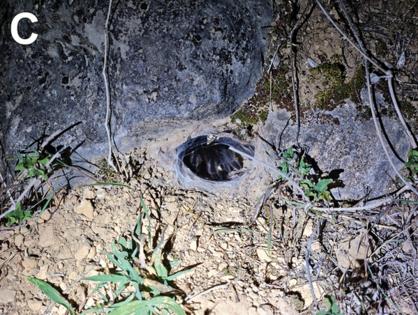Four new tarantula species -- with massive genitalia -- discovered
Published in Science & Technology News
Residents of the Arabian Peninsula and Horn of Africa are no strangers to tarantulas, but four newly discovered species in the region are changing the way researchers look at this group of spiders.
The large arachnids may look like any normal tarantula from first glance — long, sturdy legs, hair covering their bodies and two shorter legs at the front of the body poised to grab unsuspecting prey.
But under a closer inspection, this group of tarantulas has one feature that sets it apart from anything ever discovered before. The male spiders have massive genitalia.
The new species were categorized as a new genus, or group of species that share similar physical and genetic characteristics, according to a study published July 22 in the peer-reviewed journal ZooKeys.
“Based on both morphological and molecular data, they are so distinct from their closest relatives that we had to establish an entirely new genus to classify them, and we named it Satyrex,” study author Alireza Zamani said in an Aug. 4 news release from Pensoft, ZooKeys’ publisher.
Satyrex is derived from the Greek legend “Satyr,” a half-man, half-beast known for “his exceptionally large genitals,” and the Latin “rex,” meaning king, according to the study.
The first new species, Satyrex ferox, or the Dhofar black tarantula, was found in burrows at the bottom of shrubs or between rocks in southeastern Yemen and southwestern Oman, researchers said.
Live specimens were photographed and posted in the taxonomy social networking platform iNaturalist, which helped researchers determine its geographic range, according to the study.
“This species is highly defensive. At the slightest disturbance, it raises its front legs in a threat posture and produces a loud hissing sound by rubbing specialized hairs on the basal segments of the front legs against each other,” Zamani said in the release.
It is also the largest of the four new species, reaching about 5.5 inches across, researchers said.
The male palp, or the male genitalia, reach a length of nearly 2 inches long, making the genitalia longer than the front portion of the tarantulas body, and almost as long as its longest legs, researchers said.
These massive palps, also seen in the other three new species, are the longest ever seen in tarantulas, and may give the males some extra protection from their female partners, according to the study.
The long genitalia “facilitate copulation while minimising the risk of cannibalism, as it allows the male to position himself slightly away from the female rather than directly beneath her,” according to the study.
The other new species include the Arabian black tarantula, Satyrex arabicus, the Somali blonde tarantula, Satyrex speciosus, and the Somali dwarf tarantula, Satyrex somalicus, researchers said.
All of the species are fossorial, meaning they build burrows in the sand and dirt around shrubs and rocks in their various regions.
The Arabian black tarantula and the Somali dwarf tarantula were named for their countries or origin, respectively, while the Somali blonde tarantula was named for its light and “beautiful” coloration, according to the study.
Another tarantula, Satyrex longimanus from Yemen, was also grouped into the genus, despite being originally described under a different genus in 1903, according to the release.
“Satyrex longimanus, despite also having an elongated palp, was formerly classified in the genus Monocentropus, where the male palp is only about 1.6 times the length of the carapace and well within the typical range of 1.5 to 2 times seen in tarantulas,” Zamani said. “The much longer palps of S. longimanus and the four newly described species were among the primary characters that led us to establish a new genus for these spiders, rather than place them in Monocentropus.
“So yes, at least in tarantula taxonomy, it seems that size really does matter,” Zamani concluded.
The research team includes Zamani, Volker von Wirth, Přemysl Fabiánek, Jonas Höfling, Pavel Just, Jan Korba, Alice Petzold, Mark Stockmann, Hassan Sh Abdirahman Elmi, Miguel Vences and Vera Opatova.
©2025 Miami Herald. Visit at miamiherald.com. Distributed by Tribune Content Agency, LLC.







Comments